Types of Anchors for Recreational Boating: A Comprehensive Guide
Posted on , Last Updated
Recreational boating is a fun and exciting activity that many people enjoy. However, it is important to ensure that you have the right equipment and knowledge to stay safe on the water. Anchoring is an essential part of boating, and it is crucial to understand the different types of anchors available for recreational boating.
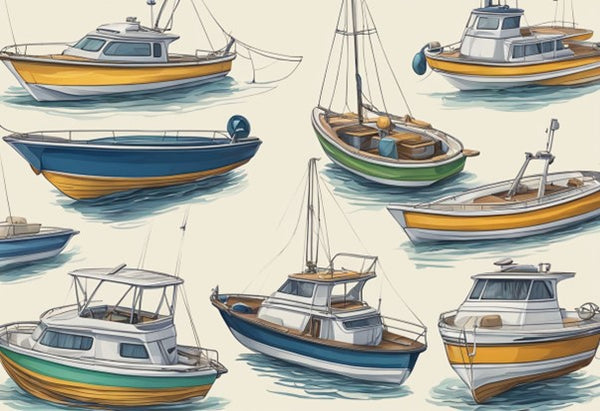
An anchor is a device used to hold a boat in place by attaching it to the bottom of the water body. There are various types of anchors available, and each one is designed for specific conditions. Understanding the different types of anchors and their uses is essential to ensure that you choose the right one for your boat and the water conditions you will be in.
When it comes to choosing an anchor, several factors need to be considered, such as the type of boat, the size of the boat, the water conditions, and the type of bottom. Additionally, the anchor material, anchor line and rode, and anchoring techniques also play a significant role in choosing the right anchor. By understanding these factors and the different types of anchors available, recreational boaters can ensure a safer and more enjoyable boating experience.
Key Takeaways
- There are various types of anchors available for recreational boating, and each one is designed for specific conditions.
- When choosing an anchor, factors such as the type and size of the boat, water conditions, type of bottom, anchor material, anchor line and rode, and anchoring techniques should be considered.
- Understanding the different types of anchors and their uses is essential to ensure a safer and more enjoyable boating experience.
Understanding Anchors
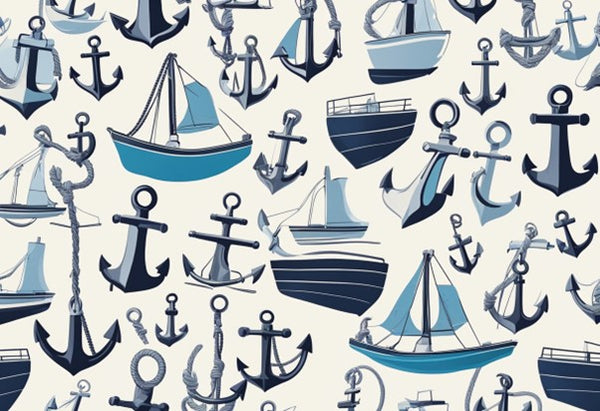
An anchor is a crucial piece of equipment for recreational boating. It is used to keep the boat stationary in the water, preventing it from drifting away due to wind or currents. There are various types of anchors available, each designed for specific boating conditions.
Types of Anchors
The most common types of anchors for recreational boating include:
- Plow Anchor: The plow anchor is a popular choice for its ability to hold in a variety of seabeds, including sand, mud, and grass. It is designed to dig into the seabed and hold the boat in place.
- Fluke Anchor: The fluke anchor, also known as the lightweight or Danforth anchor, is designed to hold in sand or mud. It is lightweight and easy to handle, making it a popular choice for smaller boats.
- Mushroom Anchor: The mushroom anchor is designed for use in soft mud or silt. It has a wide cap that provides a large surface area for holding power.
- Grapnel Anchor: The grapnel anchor is a versatile anchor that can be used in a variety of seabeds. It has multiple hooks that can grab onto rocks, coral, or other structures.
Anchor Materials
Anchors are typically made from steel, stainless steel, aluminum, or other corrosion-resistant materials. Mild steel is a common material for anchors due to its strength and durability. High-tensile steel is another option, providing even greater strength for larger boats.
Stainless steel is a popular choice for its corrosion resistance and durability. However, it is more expensive than other materials. Aluminum anchors are lightweight and easy to handle, but they may not be as durable as steel or stainless steel.
Choosing the Right Anchor
Choosing the right anchor for a recreational boat depends on several factors, including the size and weight of the boat, the type of seabed, and the weather conditions. It is important to select an anchor that is appropriate for the conditions in which it will be used.
In general, a heavier anchor is better for larger boats or boats that will be anchored in rough conditions. A lighter anchor may be sufficient for smaller boats or calm conditions. It is also important to ensure that the anchor is properly sized for the boat, with a weight that is appropriate for the boat's length and displacement.
Overall, understanding the different types of anchors and their uses is essential for safe and effective recreational boating.
Types of Anchors
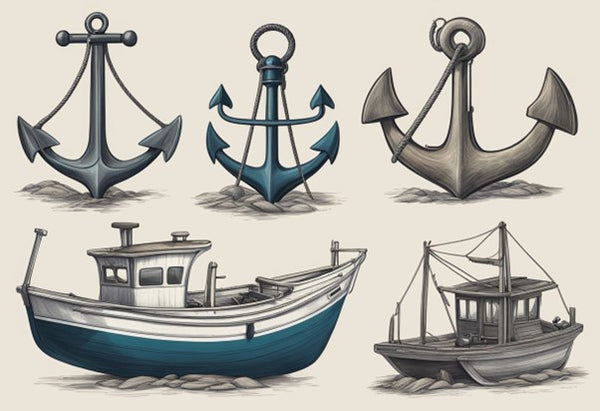
There are various types of anchors available for recreational boating, each designed to suit different seabeds and boating conditions. Here are some of the most common anchor types used by boat owners:
Fluke Anchors
Also known as Danforth anchors or lightweight anchors, fluke anchors are the most common type of anchor used for recreational boating. They have wide and flat flukes that are made from strong steel, which gives them high holding abilities. Fluke anchors are ideal for soft bottoms and can firmly keep your boat in place.
Plough Anchors
Plough anchors, also known as plow anchors, are designed to dig into hard sand and soft mud bottoms. They are shaped like a plough and have a sharp tip for penetrating the seabed. Plough anchors are ideal for boats that are more than 20 feet in length and are commonly used in areas with strong currents.
Claw Anchors
Claw anchors, also known as Bruce anchors, are one of the most popular types of anchors for recreational boats. They are designed to hold in a variety of seabeds, including sand, mud, and rock. Claw anchors have a unique design that allows them to reset themselves if the wind changes direction, making them ideal for boats that are left unattended for long periods.
Mushroom Anchors
Mushroom anchors are ideal for small boats and canoes. They have a wide cap that is designed to sit on top of soft seabeds, such as mud or grassy bottoms. Mushroom anchors are lightweight and easy to store, making them a popular choice for boat owners.
Grapnel Anchors
Grapnel anchors are ideal for boats that need to anchor in rocky areas or shallow water. They have multiple hooks that can grab onto rocks or other underwater structures, providing a secure hold. Grapnel anchors are also commonly used as lunch hooks.
Specialty Anchors
Specialty anchors include modern anchors such as the Rocna, Manson, Spade, and Roll bars. These anchors are designed to provide high holding power and are suitable for a variety of seabeds. They are ideal for larger vessels and boats that need to anchor in challenging conditions.
Sand Anchors
Sand anchors are designed to hold in sandy bottoms. They are lightweight and easy to store, making them a popular choice for boat owners. Sand anchors are also commonly used as lunch hooks.
Reef Anchors
Reef anchors are designed to hold in rocky or coral seabeds. They have a unique design that allows them to dig into the crevices of rocks, providing a secure hold. Reef anchors are ideal for boats that need to anchor in challenging conditions.
When choosing an anchor, it's important to consider the type of seabed you will be anchoring in, as well as the water depth and current. Boat owners should also consider the size and weight ratio of the anchor, as well as the length of the boat and the wind changes in the area. The anchor line and scope should also be taken into consideration, as well as the cleat and deck on the boat for securing the anchor rode. A chart and tide information can also be helpful in determining the right anchor size and type for your boat.
Anchor Materials
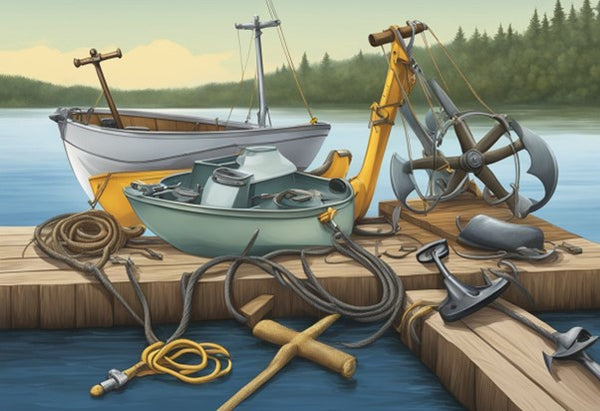
When it comes to anchor materials, there are a few options to choose from. The most common materials used for anchors are steel, stainless steel, and aluminum. Steel is the most popular choice for recreational boaters due to its durability and strength. However, it is important to note that steel anchors are prone to corrosion, especially if they are not properly maintained.
Stainless steel is another popular option for recreational boaters. It is corrosion-resistant and requires less maintenance than steel anchors. However, stainless steel anchors can be more expensive than steel anchors.
Aluminum anchors are lightweight and easy to handle, making them a popular choice for smaller boats. However, they are not as strong as steel or stainless steel anchors and are not recommended for larger boats or in rough weather conditions.
It is also important to consider the type of steel used for anchors. Mild steel is a popular choice due to its affordability, but it is not as strong as high-tensile steel. High-tensile steel is stronger and more durable than mild steel, but it is also more expensive.
When choosing an anchor material, it is important to consider factors such as the size and weight of the boat, the type of seabed, and the weather conditions. It is also important to properly maintain the anchor to prevent corrosion and ensure its effectiveness.
Anchor Line and Rode

When it comes to recreational boating, choosing the right anchor line and rode is crucial. The anchor line and rode are what connect the anchor to the boat, and they play a significant role in keeping the boat securely anchored in place.
There are three main types of anchor line to choose from: three-strand, 8-plait, and double-braided rope. Three-strand rope is the most traditional and commonly used type of anchor line. It is strong, durable, and relatively inexpensive. However, it can be prone to kinking and twisting, making it more difficult to handle.
8-plait rope, on the other hand, is more flexible than three-strand rope and is easier on the hands during anchor retrieval. It also does not tangle easily when stored in the anchor locker. However, it is not as strong as three-strand rope and may not be suitable for larger boats.
Double-braided rope is the most expensive type of anchor line, but it offers the most overall strength and excellent abrasion resistance. It is also more flexible than three-strand and 8-plait rope, making it easier to handle. However, it is not as widely available as the other two types of rope.
In addition to choosing the right type of anchor line, it is also important to consider the anchor rode. The anchor rode is the combination of the anchor line and the chain that connects the anchor to the boat. Nylon rope is the most commonly used material for anchor lines, as it is able to absorb surge loads and reduce the possibility of dislodging the anchor from the bottom.
When it comes to chain, it is important to choose a chain that is strong enough to hold the boat securely in place. A good rule of thumb is to use a chain that is at least the same length as the boat. The length of the anchor rode should also be at least seven times the depth of the water in exposed anchorages and five times the depth of the water in sheltered anchorages. This is known as the scope and is important for ensuring that the anchor holds securely.
Overall, choosing the right anchor line and rode is essential for safe and secure recreational boating. By taking the time to select the right materials and ensuring that the scope is appropriate, boaters can enjoy peace of mind while anchored in their favorite spots.
Anchoring Techniques

When it comes to recreational boating, anchoring is an essential skill to master. A good anchor and proper anchoring technique can keep a boat safely in place, even in adverse conditions. Here are some anchoring techniques that every boat owner should know.
Temporary Anchoring
Temporary anchoring is a technique used when boaters want to stop their boat for a short period, such as for lunch or to take a swim. The most common method for temporary anchoring is using a "lunch hook," which is a smaller anchor that is easy to deploy and retrieve quickly. Boaters should ensure that the anchor is suitable for the conditions, such as mud or grassy bottoms, and that there is enough scope for the water depth.
Anchoring in Different Conditions
Different bottom conditions require different types of anchors. For example, fluke anchors are suitable for sandy or muddy bottoms, while claw anchors are more versatile and durable in windy conditions. Delta or plow anchors are the most common anchor choice, while mushroom anchors are ideal for small boats and soft seabeds. Boaters should choose the right anchor size for their boat and the conditions they will encounter.
Anchor Retrieval
Retrieving the anchor can be a challenging task, especially if the anchor is stuck or the wind and current have shifted. Boaters should ensure that they have enough line, rope, or chain to reach the anchor's depth, and they should use a windlass or winch to retrieve the anchor. It is also essential to store the anchor properly in a locker or on the deck.
Anchor Storage
Proper anchor storage is crucial to ensure that the anchor is ready for use when needed. Boaters should rinse the anchor with freshwater after use to remove any salt or debris. They should also inspect the anchor for any damage or wear and tear. Boaters should store the anchor in a locker or on the deck, secured with a ground tackle, such as a chain or rope.
Anchoring requires knowledge, skill, and experience. Boaters should always be aware of the conditions, such as wind, water depth, current, and tide, and adjust their anchoring technique accordingly. With proper preparation and practice, boaters can anchor their boat safely and enjoy their time on the water.
Choosing the Right Anchor
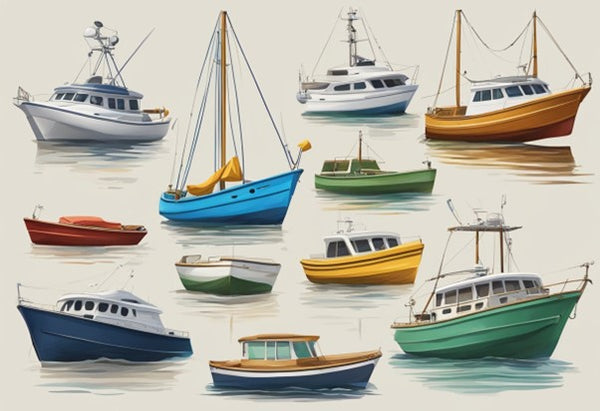
Choosing the right anchor is crucial for safe and secure anchoring. There are various types of anchors available, each designed for specific bottom conditions and boat types. It is essential to select an anchor that can hold the vessel in place, even in adverse weather conditions.
Anchor Types
The most popular anchor types for recreational boating are fluke, plow, claw, mushroom, and grapnel anchors. Fluke anchors, also known as lightweight or Danforth anchors, are suitable for small boats and are easy to stow. They hold well in sand and mud bottoms. Plow anchors, also known as CQR anchors, are ideal for grass, mud, and sand bottoms. Claw anchors, also known as Bruce or Delta anchors, are suitable for most bottom conditions and hold well in rocky bottoms. Mushroom anchors are ideal for soft bottoms, and grapnel anchors are great for rocky bottoms.
Anchor Material
Anchor material is another crucial factor to consider. The most common materials used for anchors are mild steel, high-tensile steel, and stainless steel. Mild steel anchors are the most affordable but are prone to corrosion. High-tensile steel anchors are stronger and more corrosion-resistant than mild steel anchors. Stainless steel anchors are the most corrosion-resistant, but they are also the most expensive.
Anchor Size
Choosing the right anchor size is essential for secure anchoring. The anchor size should be based on the boat length, weight, and windage. The anchor weight should be at least 1/16th of the boat's weight for calm conditions and 1/8th of the boat's weight for rough conditions. The anchor rode should have a scope of at least 7:1, and the anchor size should be suitable for the bottom conditions.
Anchor Line and Chain
The anchor rode consists of the anchor line and chain. The chain provides weight and helps the anchor dig into the bottom. The anchor line provides elasticity and helps the boat ride out the waves. The anchor line should be at least three times the depth of the water, and the chain should be at least the length of the boat.
Retrieving the Anchor
Retrieving the anchor can be challenging, especially in deep water or adverse weather conditions. It is essential to have a proper anchor locker and a windlass to retrieve the anchor easily. The anchor should be retrieved slowly to avoid damaging the boat's deck or injuring the boat owner.
Conclusion
Choosing the right anchor is crucial for safe and secure anchoring. The boat owner should consider the boat type, bottom conditions, anchor material, anchor size, anchor line and chain, and retrieving the anchor. With the right ground tackle, the boat can stay in place, even in adverse weather conditions.
Frequently Asked Questions

What kind of anchor do you use for a recreational boat?
The type of anchor you use for a recreational boat depends on the size of the boat and the type of bottom you will be anchoring in. For smaller boats, a fluke anchor is often sufficient, while larger boats may require a plow anchor. It is important to choose an anchor that is appropriate for the size and weight of your boat.
What are the different types of anchor?
There are several different types of anchor available for recreational boating, including fluke anchors, plow anchors, mushroom anchors, and grappling anchors. Each type of anchor is designed to provide reliable holding power in different conditions and water environments.
How do anchors hold a recreational boat in place?
Anchors hold a recreational boat in place by using their weight and design to grip the bottom of the waterway. The anchor's flukes or blades dig into the bottom, while the weight of the anchor keeps it in place.
What is the best anchor for pleasure craft?
The best anchor for a pleasure craft depends on the size and weight of the boat, as well as the type of bottom you will be anchoring in. For smaller boats in calm waters, a fluke anchor may be sufficient. For larger boats or in rougher waters, a plow anchor may be a better choice.
What are the advantages of using a fluke anchor?
Fluke anchors are lightweight and easy to handle, making them a popular choice for smaller boats. They work well in sandy or muddy bottoms and can be stored compactly when not in use.
What are the advantages of using a plow anchor?
Plow anchors are heavy and durable, making them a good choice for larger boats or in rougher waters. They work well in rocky or coral bottoms and provide excellent holding power.


